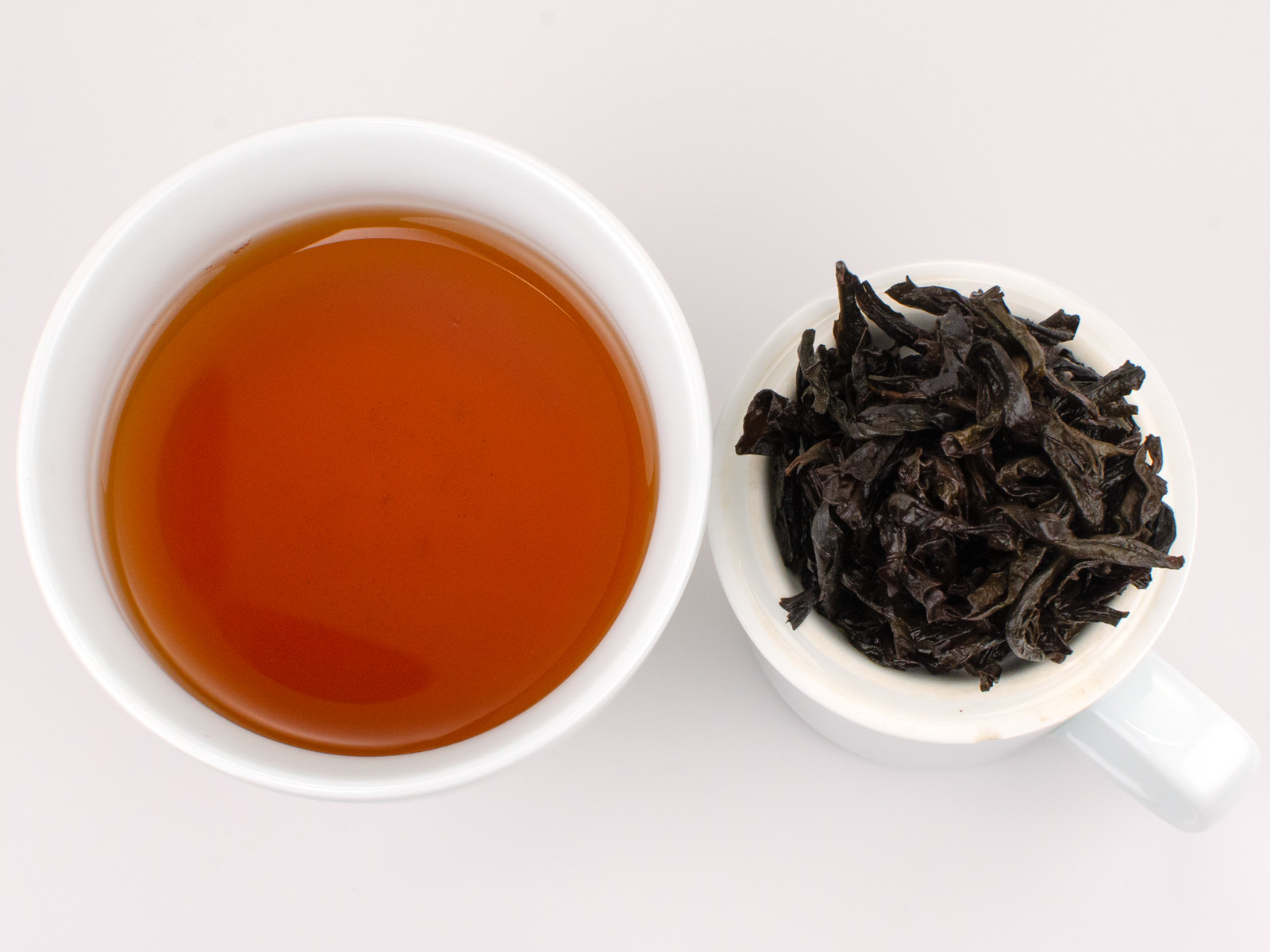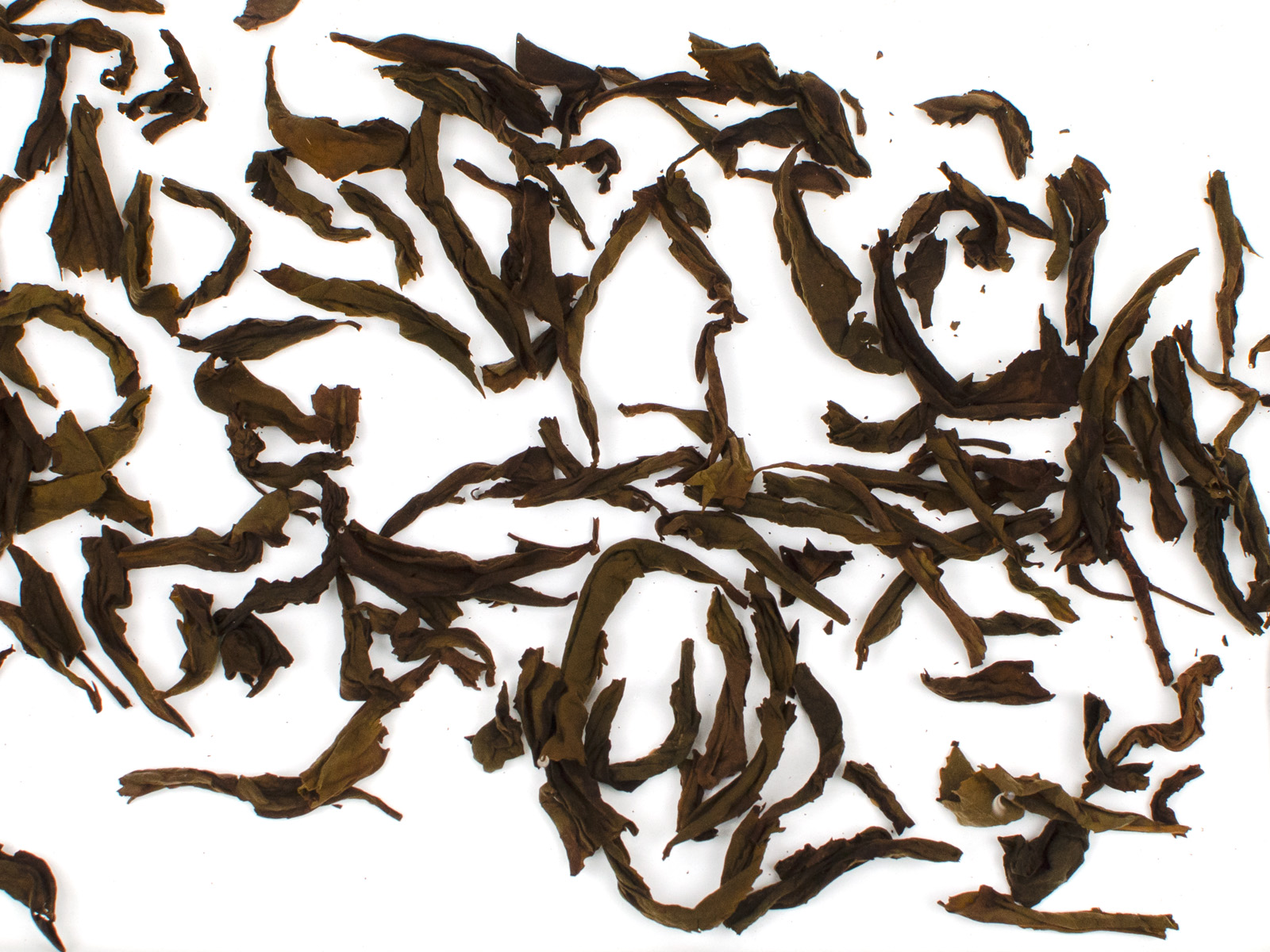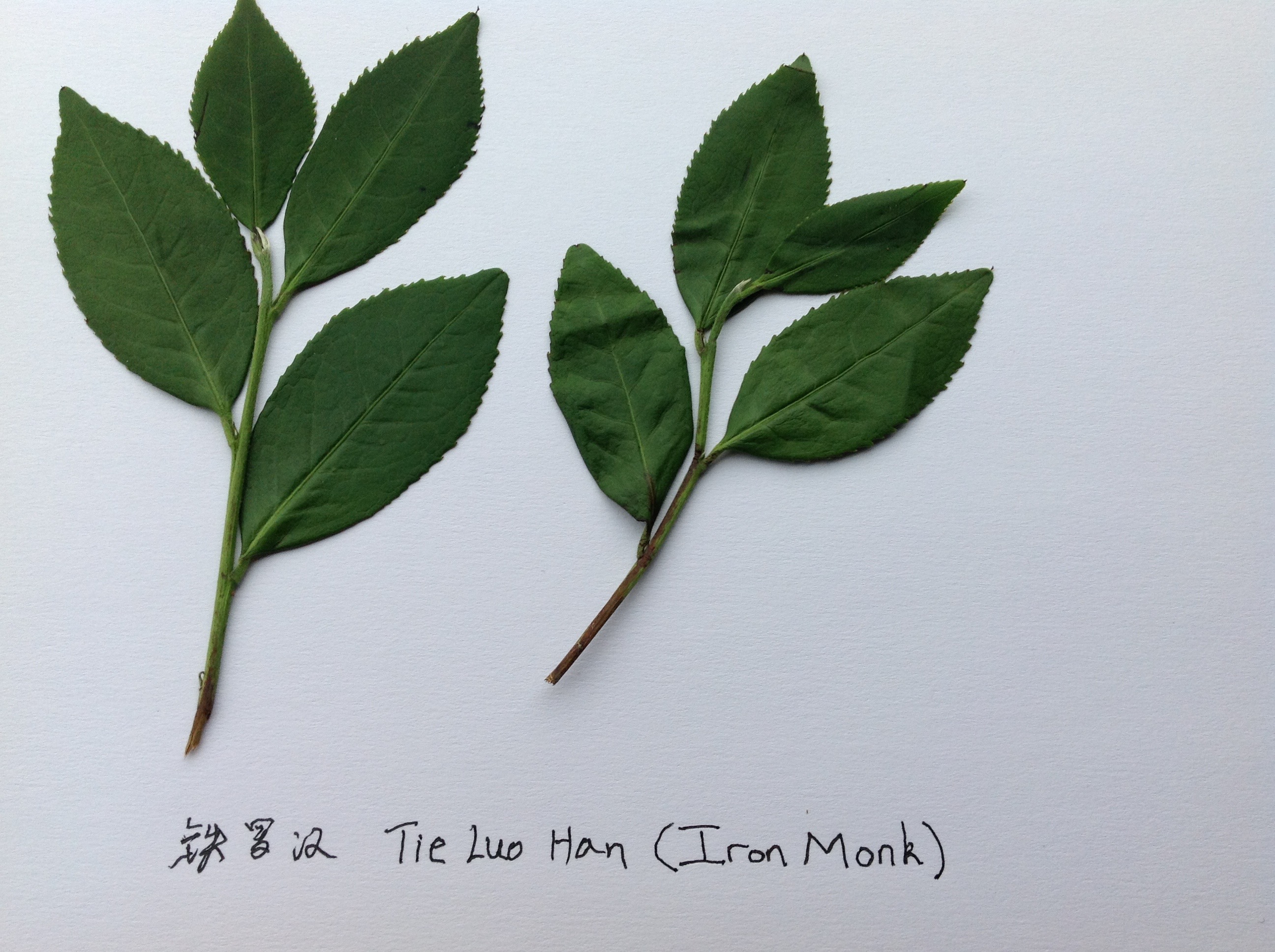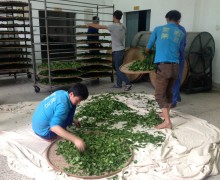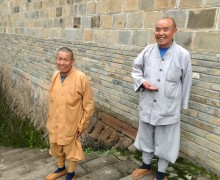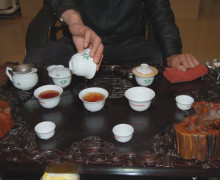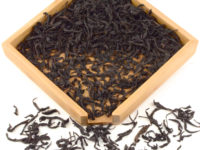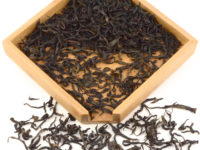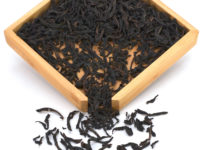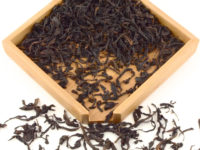Tie Luo Han (Iron Monk)
Rock Wulong Tea 2023
Tie Luo Han is one of the four famous rock wulongs from Wuyishan and has a very robust and rich flavor developed by slow traditional roasting over bamboo charcoal. A remarkable yancha with outstanding depth and complexity, named after the legend that the mother bush was discovered by a warrior monk.
Tie Luo Han is the darkest rock wulong in our catalog. Its heavy roast brings compelling resinous and woodsy notes with burnt sugar sweetness and a silky-smooth depth.
- Tea Origin
- Wuyishan City, Fujian Province, China
- Tea Bush
- Tie Luo Han (Iron Monk)
- Tea Maker
- Liu Dexi
- Harvest Time
- Early May
- Plucking Standard
- Zhong kai mian
Heavy traditional charcoal roasting over bamboo charcoal develops this rock wulong’s very robust and rich flavor. Iron Monk was named for the legend that the mother bush was discovered by a warrior monk, and its bold brew certainly reflects that strong character. It holds its own as one of the four famous rock wulongs of Wuyishan. A high-end yancha with outstanding depth and complexity.
As one of four famous rock wulong teas along with Da Hong Pao (Big Red Robe), Shui Jin Gui (Golden Water Turtle) and Bai Ji Guan (White Rooster Crest), Tie Luo Han really represents rock wulong tea’s bold, complex character. These rock wulongs develop a rich mineral aftertaste from growing the mineral rich soil of Wuyishan in Fujian Province. This unique characteristic is known as yan yun or “rock rhyme.”
Legends and history of Tie Luo Han
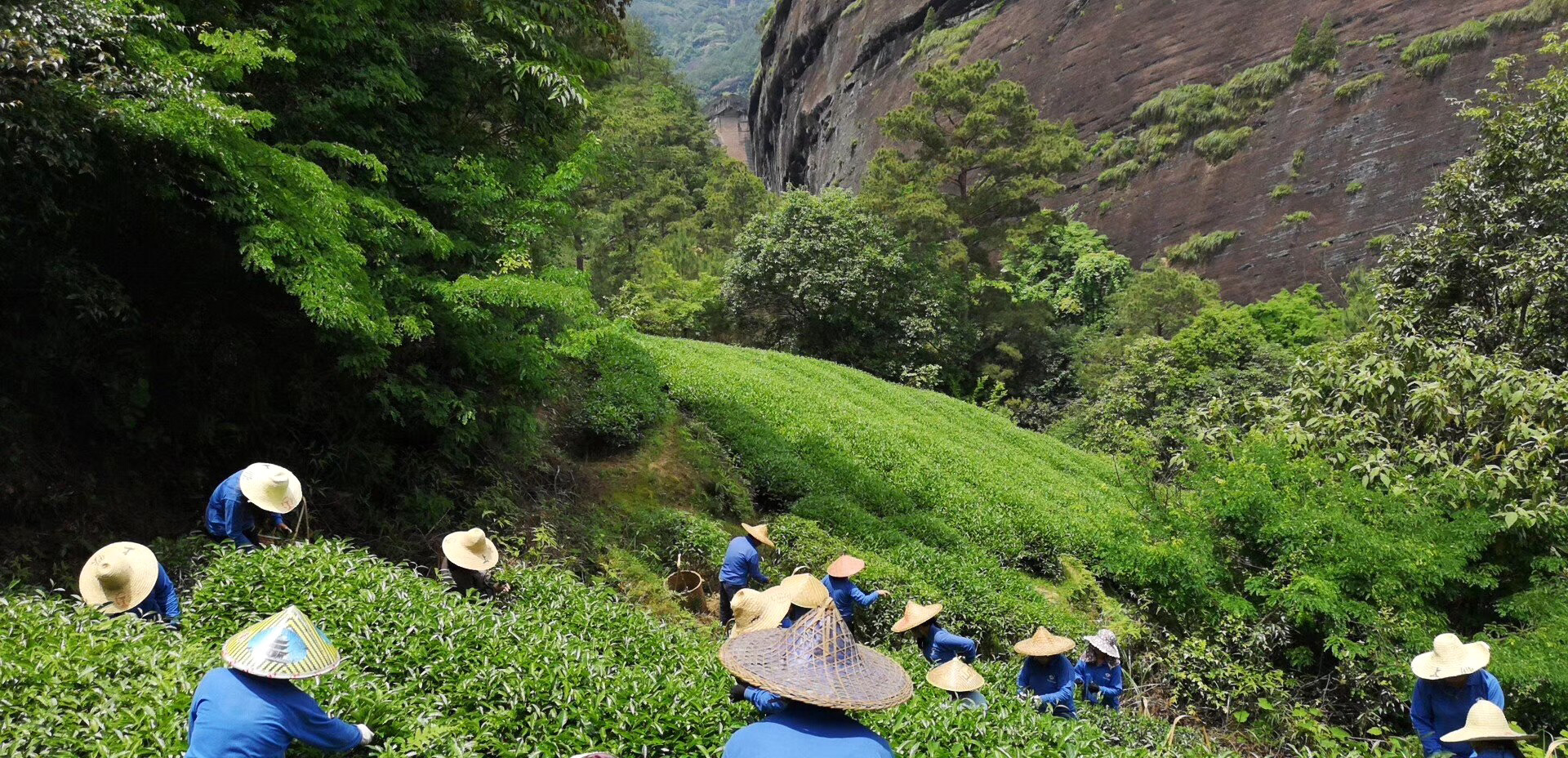
The original Tie Luo Han mother bush was found near Nei Gui Cave, high in the mountains. This bush was given the name Iron Monk to represent monks who developed their spiritual practices in this region. Legends tell stories of these special monks who practiced kung fu everyday in order to guard the temple and to chase thieves away. According to Chinese culture, after you exercise, you drink tea. They would pick tea near the cave after practice and make tea from the fresh leaves, which tasted especially wonderful during tea season.
The Tie Luo Han tea bush was mentioned as far back as the Song Dynasty (960-1279) as having excellent flavor and strong branches. The bushes themselves resemble a willow tree with thick shiny leaves with large veins. Guo Bo Cang wrote in 1886 about how Tie Luo Han bushes first became popular in making green tea during the Song Dynasty and later as the first of the four famous rock wulongs to become popular in the 17th century.
Traditional wulong hand-crafting techniques
The process for making Tie Luo Han resembles that of most rock wulongs. The fresh tea leaves are harvested, slightly sun-withered, and partially oxidized before frying, kneading, drying, and roasting. However, a few special traditional techniques at the oxidation and roasting stages truly raise this rock wulong to the next level.
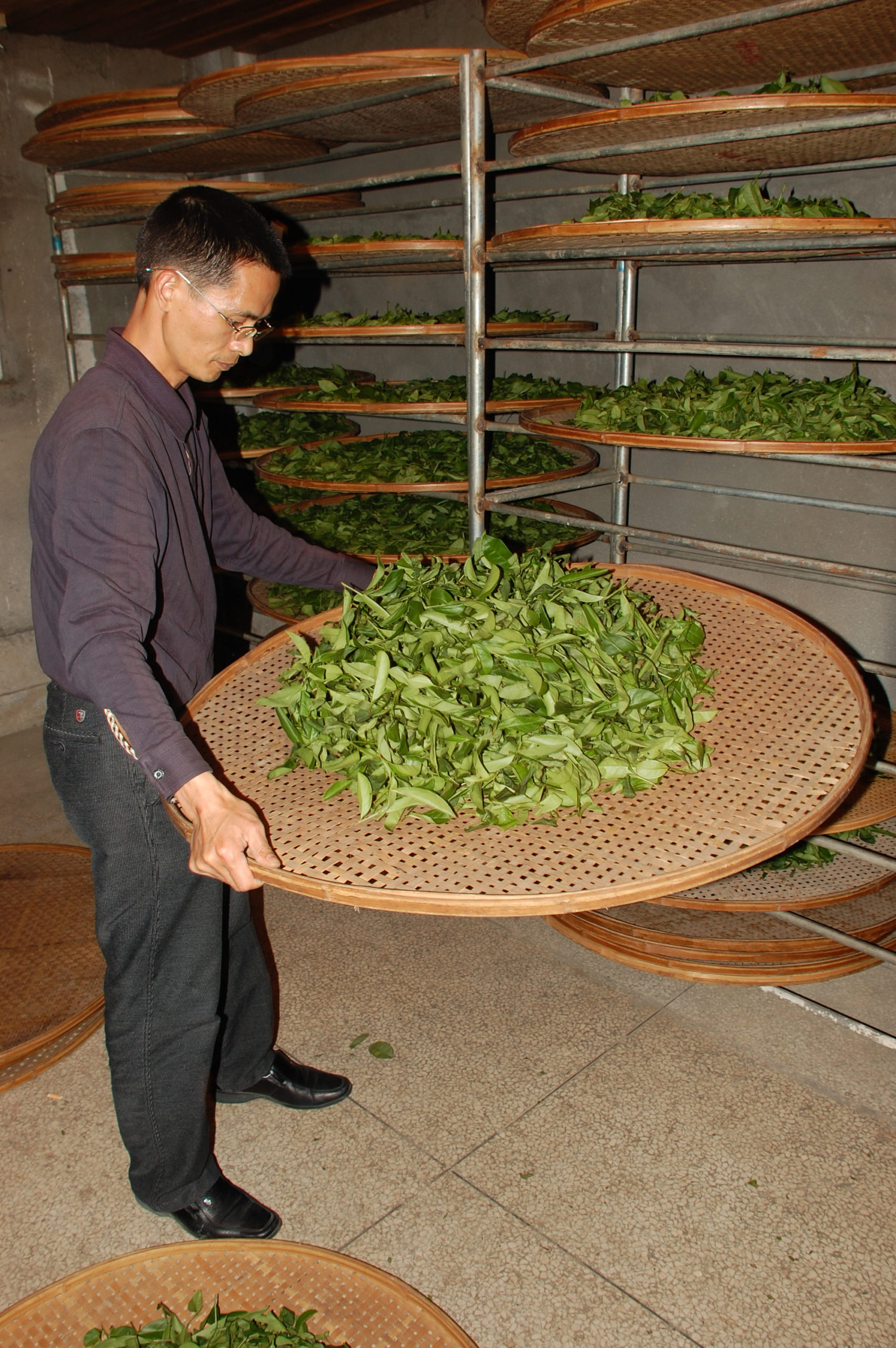
During the oxidation of the withered leaves, most wulongs are put through a ventilated rolling machine that tumbles the leaves to encourage oxidation. This method can produce excellent wulong. However, tea makers went the extra mile to oxidize this tea by the traditional tray-shaking method, where the tea is spread out on dozens of bamboo trays and each one needs to be intermittently shaken by hand over a period of several hours. The leaves also need to be carefully monitored to achieve the desired level of oxidation. This is both a highly labor-intensive task and one that requires a highly developed level of skill to gently toss and bruise the leaves on the trays.
The leaves are sent through a very hot rolling oven at about 210°C (410°F) for 7-10 minutes to stop the oxidation at the right point. Then they are put through a kneading machine which compresses and kneads the leaves into their long twisted shape. After that, the tea is dried to stability to make mao cha. The mao cha is already dried completely, but still has sprigs and unopened leaves that need to be sorted about before being roasted again. After the tea season is over they will sort out all the broken pieces and sprigs. Only then is it time for the charcoal roasting that develops Tie Luo Han’s particular character.
The charcoal finishing roast
The final step in processing Tie Luo Han is its slow charcoal roasting in place of the usual oven roasting. This process takes place over a period of several months in the late summer and autumn as an alternation of roasting and resting. The tea will be roasted two to four times depending on how well it has developed. For each roast the mao cha is placed in large bamboo drums and set above a smothered charcoal fire. The temperature is controlled with fine ash spread in a thick or thin layer on top of the charcoal fire. This ensures there is not a heavy smell from the charcoal.
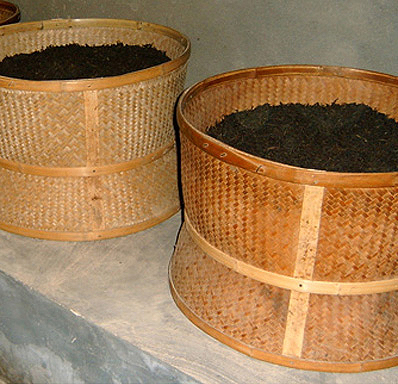
The tea is roasted over the charcoal for about 8-12 hours, depending on the weather, and the leaves occasionally need to be mixed by hand. The first roasting temperature is usually higher than subsequent ones, about 100-110°C (212-230°F). After the roast, the leaves are left to rest for 20-30 days, again depending on the weather. This allows the roasted character to slowly permeate to the center of the leaf for an even flavor, as well as letting some of the inevitable smokiness dissipate. After their rest, the leaves are roasted again for another 8 hours or so at a lower temperature around 80-90°C (174-194°F). If the weather is bad, they will roast the tea for a third time after another rest of about a month. Tie Luo Han may be roasted up to 4 times, depending on the weather. It will take at least three months until the tea is finished, usually finishing up at the end of August.
No chemical fertilizer, pesticide, or herbicide was used in the production of this tea. Click here to read more about our promise to fair trade and the environment.


